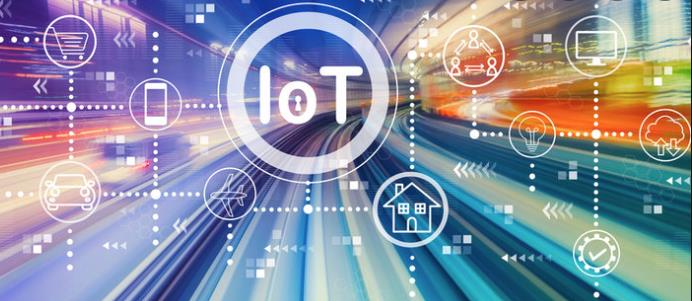8 Important Things to Consider Before Purchasing an IoT Device

IoT is changing the world. From your car to your office to your home, IoT devices are making daily life easier and more convenient. When purchasing your devices, be sure to consider the following aspects as they may make all the difference in whether you’ll be happy with or disappointed by what you purchase: battery power (including charging port), durability, customer reviews, how often a device needs to be replaced, and authenticity.
What are IoT devices?
IoT devices are physical objects that are connected to the internet. This allows them to collect and exchange data with other devices and systems. IoT devices can include everything from cars and appliances, to wearable devices and home security systems.
When choosing an IoT device, it’s important to consider its purpose and how it will be used. For example, a smart thermostat might be a good choice for someone who wants to save energy, while a connected security camera might be more suitable for someone who wants to keep an eye on their home while they’re away.

It’s also important to think about the data that will be collected by the device. Some IoT devices track personal information, such as location or health data, which could be sensitive. Be sure to read the privacy policy of any IoT device before purchasing it, so you know how your data will be used and shared.
Privacy and Security Concerns
When purchasing an IoT device, it is important to consider both privacy and security concerns. With many devices collecting data on users, there is a heightened risk of data breaches and cyber-attacks. To help protect your privacy, look for devices that have strong security features, such as encryption and authentication. You should also consider whether the device is able to be updated with the latest security patches.
In addition to these general security considerations, there are also specific privacy concerns to be aware of when using IoT devices. For example, many smart home devices collect data on user behavior, including when they are home and away. This data could potentially be used by thieves to target homes that are empty. To help protect your privacy, only purchase IoT devices from reputable companies and make sure to read the terms of service before agreeing to anything.
How to pick a strong password for IoT devices
Picking a strong password is important for keeping your IoT device safe. Here are a few tips to help you choose a good password:
- Use a mix of letters, numbers, and symbols in your password. This will make it harder for someone to guess your password.
- Avoid using easily guessed words like “password” or your birthday.
- Make your password at least 8 characters long. The longer your password is, the more difficult it will be to crack.
- Change your password regularly to further reduce the risk of someone guessing it.
By following these tips, you can help ensure that your IoT device is protected with a strong password.
Buying a WiFi-enabled printer: Pros and Cons
When it comes to choosing a printer, one of the most important things to consider is whether or not the device is WiFi enabled. On the one hand, a WiFi-enabled printer can be incredibly convenient – you’ll be able to print from anywhere in your home or office without having to physically connect your computer or other devices to the printer. On the other hand, there are some potential drawbacks to consider as well. Here are some of the pros and cons of buying a WiFi-enabled printer:
PROS:
-Increased convenience: as mentioned above, perhaps the biggest advantage of owning a WiFi-enabled printer is that you can print from anywhere in your home or office without having to physically connect your device to the printer. This can be extremely helpful if you have a large home or office, or if you frequently need to print documents while on the go.
-Compatibility with multiple devices: most WiFi-enabled printers are compatible with multiple devices, including laptops, smartphones, and tablets. This means that you’ll be able to print from any device that you own – which can be very handy if you need to print something in a pinch.
CONS:
-Potential for security breaches: because WiFi-enabled printers are connected to the internet, there is always a potential for security breaches. If you’re concerned about keeping your data secure, then it’s worth considering a different type of printer.
-Higher price tag: WiFi-enabled printers typically cost more than traditional
Project Pros and Cons:
The internet of things is still in its early developmental stages, which can be both a pro and a con when deciding whether or not to purchase an IoT device. On the one hand, you may be rewarded with being an early adopter of new technology and have access to features that aren’t yet available to the mass market. However, you may also experience more glitches and teething problems with a new device than you would with a tried-and-tested one.
When it comes to pros, owning an IoT device can make your life more convenient in a number of ways. For example, if you have a connected thermostat, you can program it to automatically adjust the temperature based on your daily schedule or when it detects that no one is home. This can save you money on your energy bills and ensure that your home is always comfortable.
Another potential benefit of owning an IoT device is that it can help you stay safe and secure. For instance, if you have a connected security camera, you can check in on your property even when you’re not there. This can give you peace of mind.
Of course, there are also some potential drawbacks to owning an IoT device. One of the biggest concerns surrounding the internet of things is data privacy and security. Because these devices collect personal data, there’s always the risk that this information could fall into the
Comments are closed.

[…] using a TDS meter, it is important to first calibrate the device according to the manufacturer’s instructions. This will ensure accurate readings. Once the […]
[…] Internet of Things, or IoT for short, is a network of physical devices that are connected to the internet and can collect, […]
[…] Once you have some content, the next step is to promote it through social media channels. The most important thing here is to make sure you’re engaging with your audience; simply promoting your content […]
[…] battery is one of the most important components of any electronic device. Without a properly functioning battery, the device will not work. This is why it is essential to […]
[…] break the bank Here are great examples if you’re in the market for an EV, there are a lot of things to consider before making your purchase In addition to things like range and charging time, you’ll also want to think about how much […]
[…] batteries are smaller and lighter, making them more convenient and portable. This is especially important for portable devices such as smartphones, laptops, and electric vehicles. A smaller and lighter battery means that the […]
[…] the core of IoT-enabled home automation is the ability to monitor and control devices from virtually anywhere with an internet connection. […]